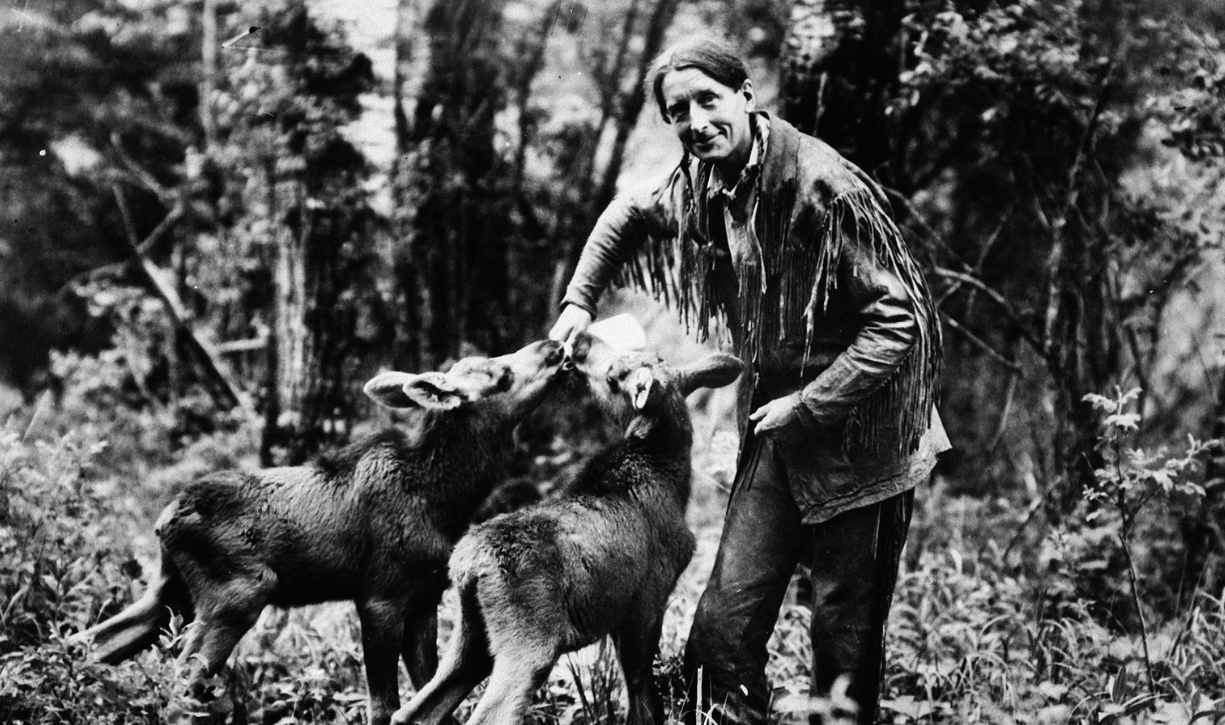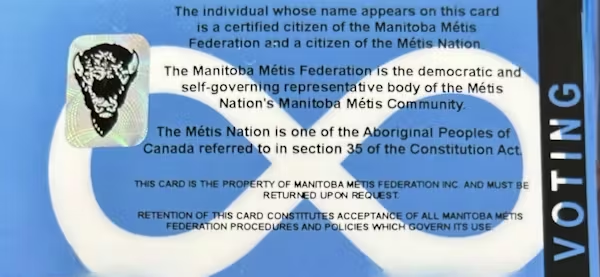Analysis: Outing a pretendian: How four Métis scholars redefined Indigenous identity policy

Grey Owl (Archibald Stansfeld Belaney) was a Canadian writer and conservationist and one of the most well-known Indigenous imposters. Three years after a news article famously brought forward their work and exposed Carrie Bourassa's Indigenous identity fraud, the four researchers involved reflect on the ongoing impact and challenges of their work. (CP / National Archives of Canada C-036186)
BY Chelsea Gabel, McMaster University; Bobby (Robert) Henry, University of Saskatchewan; Caroline Tait, University of Calgary; and Janet K. Smylie, University of Toronto
August 30, 2024
![]() Chelsea Gabel is an Associate Professor, Indigenous Studies Department & Department of Health, Aging and Society at McMaster University; Bobby (Robert) Henry is an Associate Professor, Indigenous Studies at the University of Saskatchewan; Caroline Tait is a Professor and Canada Research Chair in Indigenous Health Equity and Inclusion, University of Calgary, and Janet K. Smylie is a Professor, DLSPH and DFCM, Faculty of Medicine, University of Toronto. This article is republished from The Conversation under a Creative Commons license. Read the original article.
Chelsea Gabel is an Associate Professor, Indigenous Studies Department & Department of Health, Aging and Society at McMaster University; Bobby (Robert) Henry is an Associate Professor, Indigenous Studies at the University of Saskatchewan; Caroline Tait is a Professor and Canada Research Chair in Indigenous Health Equity and Inclusion, University of Calgary, and Janet K. Smylie is a Professor, DLSPH and DFCM, Faculty of Medicine, University of Toronto. This article is republished from The Conversation under a Creative Commons license. Read the original article.
Addressing the pretendian issue in Canada is deeply personal, for us, because we are the academics who uncovered and exposed Carrie Bourassa’s Indigenous identity fraud.
We are four Red River Métis scholars who hold Métis citizenship with our familial connections to the Prairies. We are Indigenous health researchers, and our relationship began 20 years ago through the Network Environments for Indigenous Health Research.
In 2018, we discovered that Bourassa had fabricated her Métis identity, a deception dating back to her graduate studies at the University of Regina. An anonymous email from a former student exposed inconsistencies in her claims of Métis, Anishinaabe and Tlingit ancestry.
Confronting Bourassa led us to investigate further, resulting in a detailed review of her public presentations and publications. Several Indigenous and non-Indigenous genealogy experts also confirmed the discrepancies in her claimed ancestry.

We then filed a complaint of research misconduct against Bourassa with the University of Saskatchewan where she was a professor in the College of Medicine and the Canadian Institutes of Health Research (CIHR) where she was the scientific director of the Institute of Indigenous Peoples’ Health. We also raised concerns at a second university actively recruiting Bourassa.
Our complaints were dismissed, so we contacted different media outlets. It was CBC’s investigative journalist, Geoff Leo who brought our story forward.
As we near the three-year anniversary of his groundbreaking article, we reflect on the time, effort and challenges invested into exposing Bourassa.
Building a career on Indigenous identity
On Oct. 27, 2021 CBC News published “Indigenous or Pretender”, exposing Bourassa’s unverified claims of Indigeneity.
It marked a pivotal moment in Leo’s journalism career.
He wrote similar stories involving other high-profile individuals like prominent lawyer Mary Ellen Turpel-Lafond and musician Buffy Sainte-Marie.
Leo was a finalist for the Michener Award, which recognizes excellence in public service journalism, for “Indigenous or Pretender” in 2021 and for “Disputed History” in 2022.
After the CBC story received global attention, the University of Saskatchewan commissioned Jean Teillet, a Métis lawyer, to write a report to detail the scope and propose some solutions on Indigenous identity fraud.
It has since become a key resource in Canada.
While Leo and Teillet continue to advance their careers, those of us who brought the truth forward have faced criticism and scrutiny, and at least one of us made the difficult decision to leave their university due to a lack of support from senior administration.
Initially, the University of Saskatchewan and CIHR publicly supported Bourassa. A press release included quotes from the university’s Indigenous provost and the president of CIHR backing her.
It was deeply upsetting and left our group feeling demoralized and powerless.
However, once Bourassa revealed to the Saskatoon Star Phoenix that “she did not have evidence she was Tlinglit and was working to piece together part of her ancestry,” both institutions forced her to resign.
Moving beyond self-identification
While the revelation of Bourassa’s identity fraud brought tremendous hurt and feelings of betrayal to the Métis and broader Indigenous community, we did not anticipate our complaint would transform identity politics.
In Canada, universities, governments and other agencies are now implementing ancestry-verification policies. Individuals are required to show proof of membership, connection or citizenship to an Indigenous community when applying for opportunities reserved for Indigenous Peoples.

This replaces the self-identification approach.
Federal research funding agencies like the CIHR, the Natural Sciences and Engineering Research Council and the Social Sciences and Humanities Research Council also released a report identifying a potential path forward with respect to Indigenous citizenship and membership.
The official Tri-Agency Indigenous Citizenship and Membership Affirmation Policy is to be released Oct. 1, 2024.
Key insights on addressing Indigenous identity fraud
Since the CBC story, there are several things we need to consider.
First, outing a pretendian requires time, effort and resources. We spent years piecing together Bourassa’s evolving narrative. We corroborated our findings through public discussions and publications. These efforts distracted us from our core work as Métis citizens and academics working to advance Indigenous health and social interests through community partnered teaching, research and scholarship.
Second, many who claim an Indigenous identity manifest it around trauma and violence. In the introduction of Listening to the Beat of Our Drum, Bourassa describes her experiences as a Métis child, which includes claims of being bullied and called “half breed” and “squaw.” Such claims are deeply harmful to the Indigenous Peoples who continue to face anti-Indigenous racism.
Third, even when it is clear someone has concocted their Indigenous identity, disbelief and opposition are common. We encountered resistance from Bourassa and others, including our own colleagues, who argued her deceit shouldn’t overshadow her “good work.” Not only do people support pretendians, but institutions often back them as well.
We must ask ourselves: “What happens when there is no media coverage and public scrutiny?”
Without the media, Bourassa would likely still be employed at the University of Saskatchewan and CIHR.
Our complaint and years of research had no impact on either institution. It was only when extensive negative media attention occurred that change began.

Three years later, more individuals are being held accountable for their false claims of Indigeneity.
Some individuals are also advancing their careers on the topic of pretendian activism while simultaneously attempting to silence those who worked to uncover the truth.
For example, we’ve encountered individuals who initially claimed our efforts would lead nowhere and thought we were foolish to proceed, but they now speak about the issue on national and international platforms.
We adhere to our Métis values, including traditional buffalo hunt laws, which hold individuals accountable for causing harm to the community. We will not erase the memory of Bourassa. This is now part of our story, and we must remember how we arrived here and where we aim to go.![]()
Chelsea Gabel, Associate Professor, Indigenous Studies Department & Department of Health, Aging and Society, McMaster University; Bobby (Robert) Henry, Associate Professor, Indigenous Studies, University of Saskatchewan; Caroline Tait, Professor and Canada Research Chair in Indigenous Health Equity and Inclusion, University of Calgary, and Janet K. Smylie, Professor, DLSPH and DFCM, Faculty of Medicine, University of Toronto. This article is republished from The Conversation under a Creative Commons license. Read the original article.


